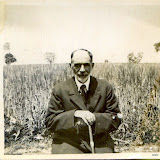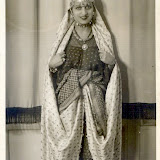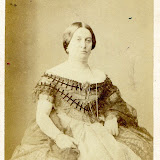12 enigmatic snapshots of the Turkish landscape
“I thought I’d photograph nature and landscape but I wound up photographing the changing of the times.”
Charles Moore
After 9000 years of settlement Turkey has no wilderness. It isn’t difficult to find a patch of land that appears unmarked by people and could fit into the frame of a viewfinder but the image would be deceitful because there is sure to be a track, a powerline or a cottage just to one side. Even during photography’s pioneering era when a few photographers left the cities and wandered around the countryside they were looking for and drawn to ancient ruins or villages that looked like they hadn’t changed for centuries. A landscape devoid of humanity was empty and dull.
It was always a part of the world that tested its occupants. A narrow strip bordering the Mediterranean and Aegean, roughly from Antalya in the south west to Thrace bordering Greece and Bulgaria could be called temperate and accommodating but away from that the climate produced extremes. Moving eastwards meant climbing a series of plateaus that developed into mountains high enough to have snow on the peaks in mid-summer. The south east was the edge of the Arabian desert system, the north east the beginning of the steppe that spread across to Siberia. Summer was relentlessly hot, winter buried under snow. The climate imposed nomadism on anyone who chose to settle there so come the right season they’d move out in one direction or another to escape the worst of what lay in store. The inland cities were always small, underdeveloped and vulnerable. A lot of them still are.
This was a typical village scene in the 1930s and you can wonder what exactly drew the photographer too it; the bare tree or the water pump looking useless in a pile of stones? It’s possible that the photographer wanted to make a point about the obvious poverty of the village though he or she might not have been impelled by a social conscience. For Turkish people born and bred in the cities the villages in the east could be as strange and backward as they were to western Europeans. You can imagine someone working the pump furiously for a thin trickle of water.
This photo was most likely taken somewhere just east of Ankara, in the foothills of the Taurus Mountains, but it also looks as though it could have been taken in the American west. Think of Arizona in the 1880s and images of summary justice at the barrel of a gun and territorial violence spring to mind. This region of Turkey was different in one aspect. Out here people regarded their law as ancient tradition. When a man was killed for some small transgression things were how they had been and should always be. There are still men who are baffled when they are arrested for murdering their daughter in an honour killing. So far as they are concerned, they acted according to laws that have been in place for thousands of years.
This is a field of opium poppies, in which case it may be the area around Afyon in the central west, though the hills in the background look more like Thrace, west of Istanbul. When this photo was taken in the 1930s, poppies in Turkey meant papaver somniferum. There was no reason to cultivate any other kind and even though the European market was officially medicinal, Istanbul still had a reputation as a city of opium dens, where a traveller could lose himself for months, return home and write incoherent poetry. Afyon – the Turkish word for opium – still cultivates a fair slice of the world’s legal opium and because the plant grows as voraciously as a weed the plants are often found scattered along the roadside. You might think that would turn the town into a Mecca for dissolute tourists but even hardcore addicts need their diversions and Afyon has few.
Summer in Istanbul is horrid. The humidity intensified by vast agglomerations of concrete apartment blocks and few trees to speak of, it’s as though someone turned a huge reflecting mirror on the city. Anyone who can flees. The luckiest have summer houses on the coast or on lake shores, houses that are often bigger and better equipped than what they have to put up with back home. At some point in our lives we all want to live somewhere like this, with nothing to bother us save a bit of rain.
I am sure that if I had taken this photo back in the 1940s I’d be rather pleased with myself. I would certainly congratulate myself for having the presence of mind to tilt the camera, while using the rule of thirds to have the road dissect the line between the two trees would demonstrate to me, if no one else, I had a sophisticated grasp of composition. No idea where it is but Turkey is big enough to have long roads stretching out to nowhere.
Turkey’s heaviest winter snows begin in Siberia and for weeks meteorologists tracking their course can predict their arrival in Turkey. By the time they reach the west they have usually weakened but if they haven’t they can cripple Istanbul, partly because, being in an earthquake zone it is built on a series of steep hills but also because the traffic system is so bad a jam on one freeway system can quickly spread to another. My guess is that this was taken in Uludere, a ski resort outside of Bursa.
Some of the most renowned classical Greek literature is set on the Turkish coast, where four marine systems, the Black Sea, the Marmara, the Aegean and the Mediterranean connect. The erotic element is strong. This was a part of the world where the coast provided all that was needed, the climate was mild, the seas rarely turned bad and people had time on their hands. The sea still has a hold over national identity but these days old Greek towns like Bodrum are full of foreign tourists, the sea is littered with plastic bottles, bandages and other rubbish and eroticism means a quick shag on the beach after half a dozen pints. You feel as though something has been lost.
A friend pointed out that his eyebrows are perfectly aligned with the horizon and you do think that if they were slightly higher or lower some inner harmony in this image would be missing. It could be anywhere though you know he belongs to the eastern part of Europe. It’s the outfit that gives that away. This is a part of the world where it’s not unusual to see farmers turn up to work the fields in a suit and tie.
At first glance this looks like a village scene but it could also be along Istanbul’s ancient walls, close to the city centre. For years the walls were given over to gypsies and squatters and had a dangerous reputation. Most of the people living there had moved from villages in the east and adapted the ruins to their way of life, embarrassing officials who imagined Istanbul as a modern metropolis.
In a few years all that will have disappeared as the Government continues its redevelopment of the city but the clean-up involves moving the people out, to where, the government doesn’t know yet. It just wants them out.
One of those photos that tell you all you need to know without giving the location, the date or why it was taken. This could be any town or city in Turkey C1940; the whole country looked dishevelled as though it might have been knocked together just a few weeks earlier and run down as if it had been allowed to fall apart for decades. Note the rear tyre rim on the truck, the ambulance behind the truck and the general condition of the buildings. Nothing works and nothing can be thrown away.
 |
| TURKEY |








































